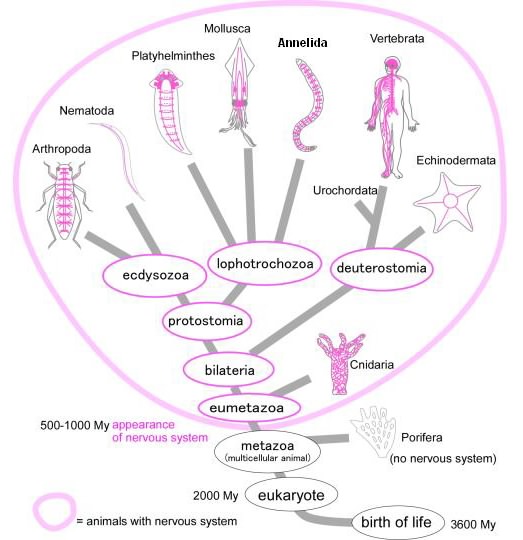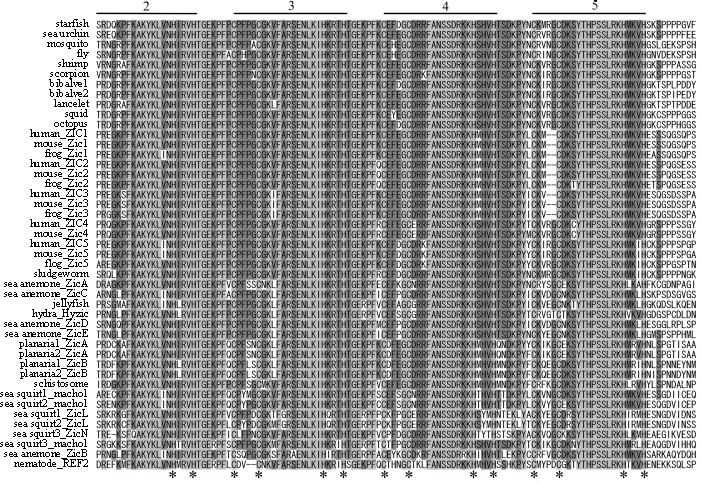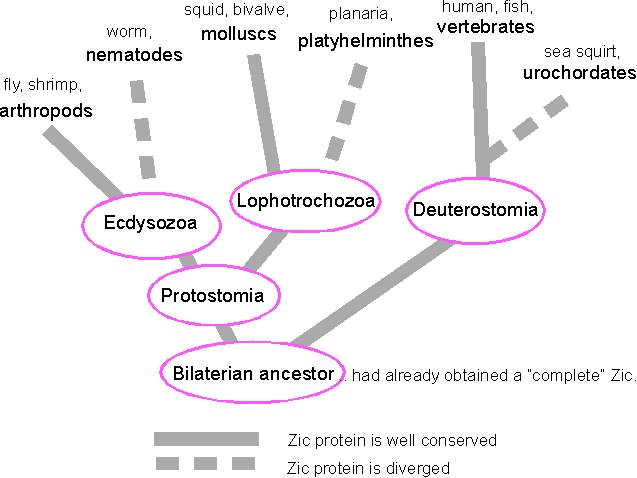|
Home >Recent Advances
Understanding the evolutionary processes of "tool-kit" genes (Takahashi et al., 2008 and others) In developmental processes of multicellular animals, many proteins have to be produced in a time/place/dose-coordinated manner based on the genetic information. Numerous repetition of the coordinated gene expression underlies the sophisticated body organization. However, concerning the genetic programs of body pattern formation in early embryogenesis, there are commonly used proteins even among evolutionary distant animals. This is why some researchers think the “principle” of animal development using the evolutionary distant animals such as fly, worm, fish and mouse.
The brain development may be carried out based on the basic body-organization-blueprints that are specific to an animal species depending on their strategy to survive in an environment. To understand how our brains are established in the course of evolution, we have been conducting a comparison of the structure and function of the gene that are essential for establishing body organization and brain development in a wide rage of animals with nervous system. Our recent targets are Zic and Msx, both of which are required for the nervous system development in many animals. They encode transcription factor proteins that mainly play roles in reading out the genetic information written in the DNA. They can be regarded as tools to construct animal body/nervous system organization. Therefore some researchers are using the words “tool-kit-genes” to call such genes. Tool-kit-genes generally encode proteins controlling the signal flow within or between cells or the transcription factor as the case in Zic and Msx. When we compare the DNA sequence encoding these proteins, we can see strongly conserved domains across many animal species. Zinc finger domain of Zic and homeodomain of Msx are such ones, and are known to bind DNA sequence. In the below figure, the lighly shaded letters indicate the absolutely conserved amino acid residues that are the unitary components of proteins. You can see that they are absolutely conserved among all of the multicellular animals including jellyfish, planarian, squid, fly, and human.
The extent of the conservation varies in the protein structures. We can estimate the functional importance based on it. This is a very useful mean to consider the significance of the functional or structural units of the proteins. Below figure summarizes one of our major finding in the comparison of Zic proteins. In this case, we can consider that there was, in a sense, “complete” Zic protein in a common ancestor of animals that have symmetric body organization. The “complete” means that the protein is equipped with the entire conserved domains that are found in broad range of currently surviving animals. We postulate that the conserved domains have been selectively lost in the course of evolution. Interestingly, such selective loss seemed to have occurred multiple times in some offspring groups. One is the vertebrates and ascidians (sea squirt) that derive from a common ancestor having a notochordrod, shaped axial structure (Chordata). The other cases were found in the nematode/arthropod (insect, spider, shrimp etc) group (Ecdysozoa), and mollusca/planarian group (Lophotrochozoa).
The selective loss (or degeneration) of the conserved domains seems to be a common tendency of evolutionary processes of Zic and Msx genes. The feature may be explained by the differential evolutionary speed among the animal groups, or by the difference of the body organization (i.e. the difference between simple and complex body organizations. The constraint on the protein structure may have become strong if the tool-kit proteins mediate many, essential developmental processes.). Focus of our study is moving onto how the structural differences of the tool-kit-proteins generates the functional diversity, which, in turn, could be involved in the diversity of nervous systems in currently living animals. |


